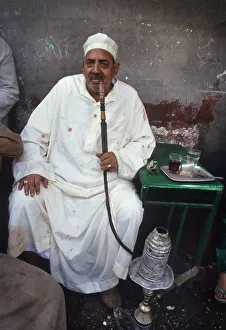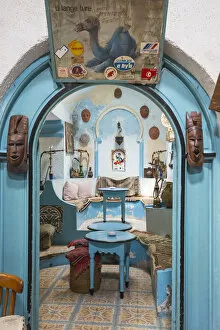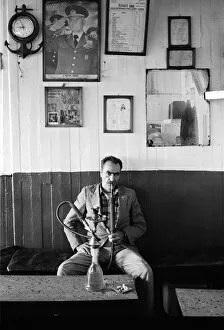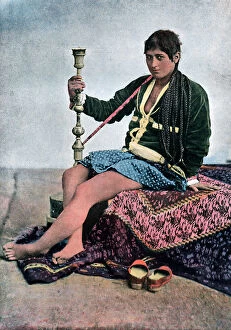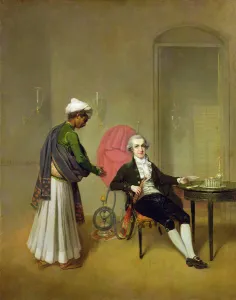Hubble Bubble Collection
In the bustling streets of Cairo, Egypt, a man finds solace in a back street tea shop
All Professionally Made to Order for Quick Shipping
In the bustling streets of Cairo, Egypt, a man finds solace in a back street tea shop. Surrounded by the aroma of exotic spices and the gentle chatter of locals, he indulges in the age-old tradition of hubble bubble. The sweet scent of tobacco fills the air as he takes slow puffs from his Turkish hookah, immersing himself in this timeless ritual. Meanwhile, in Tunisia's vibrant city of Sousse, Cae in Madina captures two women embracing both coffee and hubble-bubble. As they sip their aromatic brews and share laughter-filled conversations, a black African woman slave stands nearby - an unfortunate reminder of a darker era. Transported back to 1865 through a colorful lithograph titled "The Cup of Coffee, " we witness another scene where women enjoy coffee and smoke hubble-bubbles. This glimpse into history showcases how these customs transcended borders and cultures. Moving forward to 1911 on the waters surrounding Cowes, we encounter the motor boat Hubble-Bubble manned by mariners. A symbol of adventure and exploration during that time period when maritime travel was at its peak. Traveling further east to Kalgan around 1890 brings us face-to-face with a Persian woman gracefully smoking her hubble-bubble pipe. Her elegant demeanor reflects both cultural traditions and personal style. As we delve deeper into history aboard Kilwa's third-class cabins bound for Burma in 1886, we witness diverse passengers engaging in conversation while enjoying their shared passion for hubble bubble. These moments foster connections among people from different walks of life. Stepping even further back into time reveals an enchanting painting from 1808 depicting Persians engaged in leisurely activities such as smoking hubble bubbles. This artwork serves as a testament to how this pastime has endured throughout centuries across various societies. Lastly, we catch glimpses into colonial India circa 1785 through an oil painting featuring a gentleman, possibly William Hickey, and his Indian servant.

